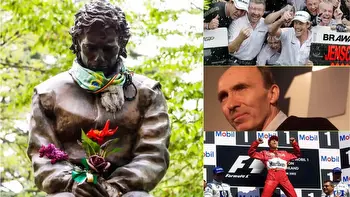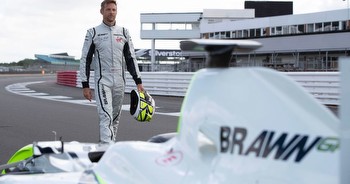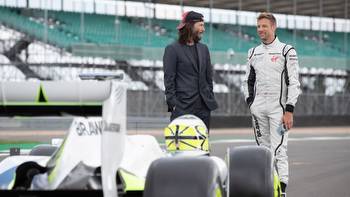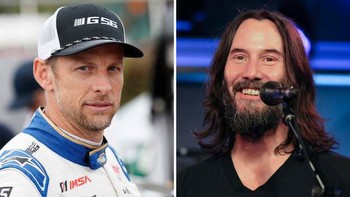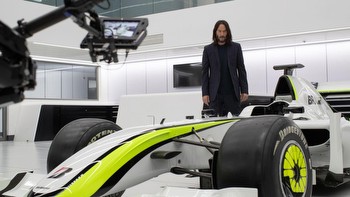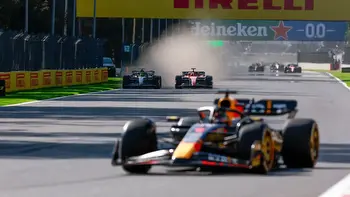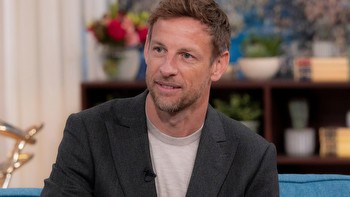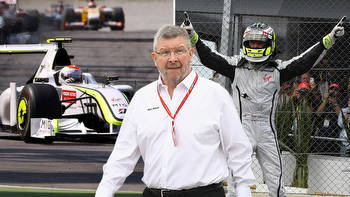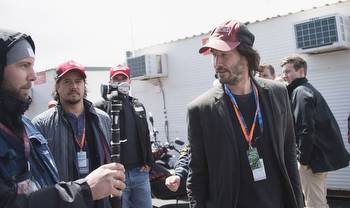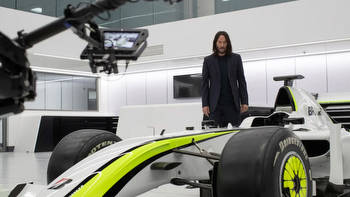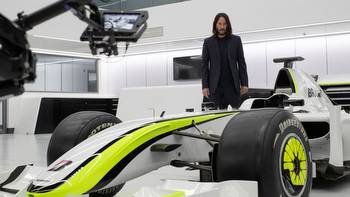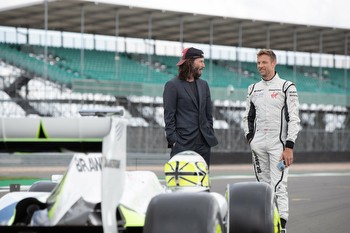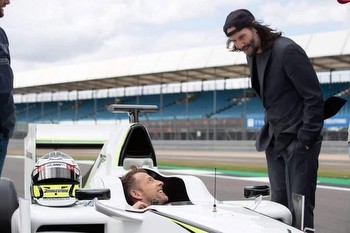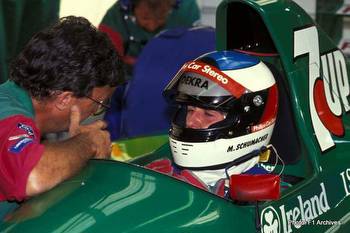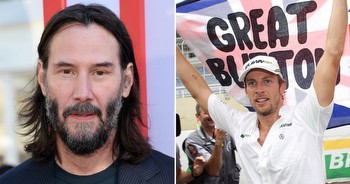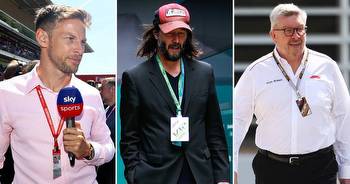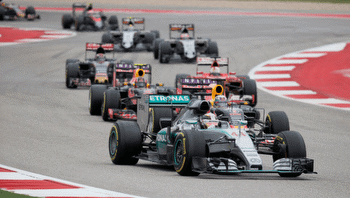Keanu Reeves and the £1 F1 team: Why the actor loves Brawn GP’s ‘underdog story’

Stay informed on all the biggest stories in Formula One. to receive the Prime Tire newsletter in your inbox every Tuesday and Friday morning.
“Did you hear that story about the Formula One team that was bought for a pound and won the championship?”
Keanu Reeves’ voice remains heavy with disbelief, even though he has spent the past two years engaged with the people, politics and cars at the heart of that story. From the moment the star of the “Matrix” and “John Wick” movie franchises first heard about Brawn GP from a friend, it was a tale he felt compelled to tell.
“I was just like, ‘What? Huh?’” Reeves told The Athletic. His eyes widened as he recalled the first time he heard the story.
“As I learned a little bit more, I spoke with a friend of mine who I’d done some work with in terms of producing and directing. I said, ‘Hey man, do you want to try and make a documentary?’”
“Brawn: The Impossible F1 Story” is the culmination of more than 18 months’ work for Reeves, who fronts and narrates the four-part Disney+ series, premiering on Wednesday, Nov. 15. (The doc is a Hulu Original and will only be available on Hulu in the United States.)
“It’s an underdog story,” Reeves said. “It’s about overcoming extraordinary circumstances.”
For F1 diehards, the tale is part of the sport’s folklore. It’s the story of the 2009 season and Brawn’s rise from a team facing oblivion to winning the driver and constructor world championships in less than a year. It made Jenson Button a world champion and laid the foundations for Mercedes’ domination throughout the 2010s.
Yet those who have only come to F1 in recent years, be it through “Drive to Survive” or the sport’s U.S. expansion, may be less familiar with the ins and outs of the Brawn story.
“All the new fans to Formula One are going to get to see a true gritty story of the small team fighting against the giants of this sport,” Button told The Athletic.
“I’m really excited to hear their opinion of what they thought of that season. It’s going to bring new fans into the sport as well because of the emotion, the passion, that surrounds the Brawn story.”
In brief, Honda sacrificed developing its car through the 2008 season to prepare for new technical regulations in 2009. It found some important loopholes in the rules to create a car that Button would later describe as a “monster.”
But it almost didn’t race. At the end of 2008, Honda suddenly pulled the plug on its F1 project due to the Great Recession, risking all 700 jobs on the team.
The team’s senior management understood the car’s immense potential. So, led by ex-Ferrari technical chief Ross Brawn, they bought Honda’s former F1 team for £1. That is not a typo. For £1, Brawn and his people assumed the responsibility of keeping the team going. On a shoestring budget with zero sponsors, the team stayed alive, made it to the first race at Australia, and finished one-two. Brawn stunned the F1 world.
The good times flourished. Button won six of the first seven races en route to the world championship. Meanwhile, teammate Rubens Barrichello finished third with two further wins, helping Brawn clinch the constructors’ title despite a late dip in form as resources dried up.
When conceiving the Brawn documentary, Reeves wanted to dig beneath the stats and facts that made Brawn such an outlier in F1’s history.
“You could read the results of the races and who qualified where, but you can’t hear some of the inside-baseball,” Reeves said. He got access to all the leading players in the Brawn story, including Brawn himself, Button, Barrichello and team CEO Nick Fry. Reeves even met with the Honda motorsport boss, Hiroshi Oshima, who made the decision to exit F1. Oshima still carries the symbolic pound coin Brawn gave him for taking over the team, which delighted Reeves during their interview.
“Speaking really intimately about the decisions they had to make, what it meant to them and what happened, that just opened up into such a wide world and canvas,” Reeves said.
2009 was a turbulent year for F1 as a whole. Brawn faced technical protests from other teams who claimed its car, with its innovative double diffuser, was illegal. Luca di Montezemolo, then Ferrari’s president, and Red Bull F1 team boss Christian Horner both remain adamant — di Montezemolo in particular — in their interviews with Reeves that the car was outside of the rules.
F1 also faced a political battle that risked tearing the whole sport apart. The 10 teams went toe-to-toe with F1 commercial chief Bernie Ecclestone over their prize money share and threatened to form a breakaway series. Brawn’s precarious position made the team a pawn Ecclestone sought to use in the power battle.
Reeves’ interviews with Ecclestone and di Montezemolo, in particular, are fascinating. The actor extracts new information from two of the most influential figures in F1’s history and captures a taste of their character. Reeves picked his chat with di Montezemolo as the one that surprised him, saying, “He gave me the metaphor of racing being above the table, and business being underneath the table.”
GO DEEPER
Welcome to the Piranha Club: Inside the ruthless world of F1 politics
Even with such intricate technical and political matters, Reeves wanted to target the emotions involved in Brawn’s unlikely F1 story. “It’s part of the balancing act of, how do we tell the technical side but also (we’re) really interested in the human side, everyone’s perspective,” Reeves said. “That’s what we like in a story, right? Some emotion, some feelings, what’s the context? What’s the drama? The 2009 season made for and is a great story.”
Button said the on-track moments he relived through the series were “exactly how I remember … the good, the bad and the ugly.” But he admitted to learning plenty about the backroom politics, especially regarding the possible breakaway series. “I didn’t realize how serious it got,” Button said. “I was so focused on the racing.”
What struck Button was the frankness of those with whom he won the championship that year. Reeves interviews many of the engineers, mechanics and team members, who open up about the bleakness of Honda’s withdrawal, half the team being made redundant, and the efforts that went into pulling off the shock championship win.
“A lot of the guys from Brawn, I’ve seen over the years and talked about it, but it’s so brief,” Button said. “So to hear how they really felt, like Andrew Shovlin (now Mercedes’ trackside engineering director), who was my engineer, I see him quite a lot. But to hear that he’s tried to replicate that emotion that he had that year and he can’t, however many championships they won at Mercedes, really means a lot.
“We all have experienced something very special that we will struggle to replicate.”
Amid the hype around “Drive to Survive” and what it has done for the sport, turning the current grid into household names, this documentary’s step back in recent F1 history offers the kind of storyline Netflix would give anything for. With each of the four episodes coming in around an hour, it’s a show many will comfortably binge in one sitting.
Button called 2009 “the best year of my racing life” and said he hoped the series would “tug at the heartstrings a little bit. They’ll love seeing the passion we all had here.”
It is that enduring humanity that sets the Brawn series apart. It’s the very thing that made it so compelling to Reeves in the first place and what he hopes captures a broader audience beyond F1.
“I hope people get inspired by watching this,” Reeves said. “Not only race fans but people who enjoy a good story. I hope it gets people excited about Formula One.”
(Lead images via Disney+; Design: Ray Orr/The Athletic)

